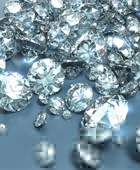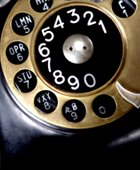Negotiating the purchase or sale of a diamond requires a deep understanding of the market, pricing factors, certification, and effective bargaining techniques. Whether you are a buyer looking for the best value or a seller aiming to maximize profits, mastering the art of diamond negotiation can significantly impact the final deal. In this guide, we will explore key strategies for both buyers and sellers, including how to assess diamond value, understand pricing dynamics, and leverage negotiation tactics effectively.

Understanding Diamond Value and Pricing
Before engaging in negotiation, both buyers and sellers must understand the key factors influencing diamond value. A well-informed negotiation relies on knowledge of the Four Cs—cut, color, clarity, and carat weight—as well as additional market dynamics.
1. The Four Cs and Their Impact on Pricing
Diamonds are graded based on the Four Cs, which directly affect their value:
- Cut: The most important factor influencing a diamond’s brilliance. A well-cut diamond reflects light efficiently, increasing its value.
- Color: Diamonds are graded on a scale from D (colorless) to Z (visible yellow or brown tint). Colorless diamonds are more valuable.
- Clarity: Measures internal flaws (inclusions) and external blemishes. Higher clarity grades (e.g., IF, VVS) increase a diamond’s worth.
- Carat Weight: Larger diamonds are rarer and more expensive per carat. However, strategic carat weight selection (e.g., choosing 0.90 ct instead of 1.00 ct) can lead to significant savings.
2. Diamond Certification and Its Role in Pricing
Reputable grading institutions like the Gemological Institute of America (GIA) and American Gem Society (AGS) provide unbiased diamond grading reports. These certificates verify a diamond’s quality and serve as a basis for pricing, ensuring transparency in negotiations.
3. Market Trends and Price Fluctuations
Diamond prices are influenced by:
- Global demand and supply – Market shifts affect wholesale and retail prices.
- Economic conditions – Inflation and currency fluctuations impact diamond values.
- Lab-grown vs. natural diamonds – Synthetic diamonds offer a cost-effective alternative, changing market dynamics.
For buyers and sellers, staying updated on diamond price indexes (e.g., Rapaport Price List) helps in setting realistic expectations.
Negotiation Strategies for Buyers
Buyers should approach negotiations with research, patience, and confidence. Here are essential strategies to secure the best deal:
1. Conduct Extensive Research
- Compare prices across multiple jewelers and online platforms.
- Check the Rapaport Price List and recent auction results.
- Understand industry terminology to avoid misleading sales tactics.
2. Set a Budget and Prioritize the Four Cs
- Determine a maximum spending limit before negotiations begin.
- Identify which of the Four Cs matter most to you (e.g., prioritizing cut over clarity).
- Consider near-threshold carat weights (e.g., 0.95 ct instead of 1.00 ct) for better value.
3. Leverage Knowledge of Wholesale vs. Retail Prices
- Jewelers often mark up prices significantly—knowing wholesale values strengthens negotiation power.
- If buying from a dealer, inquire about the diamond’s cost structure to identify room for discounts.
4. Utilize the Power of Silence and Walk-Away Tactics
- Avoid showing too much enthusiasm; appearing indifferent gives leverage.
- If the price isn’t favorable, be willing to walk away—this often results in the seller reconsidering their offer.
5. Ask for Additional Perks
- Negotiation isn’t just about price—ask for free ring settings, resizing, appraisals, or extended warranties.
- Some jewelers offer trade-in options or future upgrade benefits.
Negotiation Strategies for Sellers
For sellers, maximizing a diamond’s resale value requires strategic positioning, marketing, and patience.
1. Get a Professional Appraisal
- An appraisal from a certified gemologist provides an estimate of the diamond’s market value.
- Ensure the appraisal includes details on cut quality, fluorescence, and certification.
2. Understand Where to Sell for Maximum Returns
- Jewelry stores: Offer convenience but may provide lower payouts.
- Online marketplaces: Sites like eBay, Worthy, and I Do Now I Don’t allow for competitive bidding.
- Auction houses: Ideal for rare or high-value diamonds.
- Pawnshops and gold buyers: Offer quick cash but significantly lower prices.
3. Present the Diamond in the Best Light
- Clean and polish the diamond before listing or showing it.
- Take high-quality photos with proper lighting to highlight its brilliance.
- Provide certification and receipts to build buyer confidence.
4. Be Open to Reasonable Offers
- Set a realistic asking price based on market research.
- Allow room for negotiation but be firm on a minimum acceptable price.
Psychological Tactics in Diamond Negotiation
Negotiation is not just about numbers; it is also about psychology. Understanding how to read the other party’s intentions and using strategic communication techniques can influence the final deal.
1. The Anchoring Effect
- The first price mentioned in a negotiation serves as an “anchor” that influences the rest of the discussion.
- Buyers can counteract high anchor prices by referencing industry price guides (e.g., Rapaport Price List).
- Sellers should set their initial asking price slightly higher than their ideal amount, leaving room for negotiation.
2. Building Trust and Rapport
- For buyers: Display knowledge and confidence without being confrontational. Ask about the diamond’s history and certification to show seriousness.
- For sellers: Be transparent about the diamond’s characteristics and provide documentation upfront. A reputable approach reassures buyers.
3. Using Scarcity and Urgency
- Sellers can mention limited availability or market trends to justify pricing (e.g., “This cut and quality are rare in today’s market”).
- Buyers can counteract sales pressure by taking their time and avoiding rushed decisions.
4. The Power of Silence
- After making an offer, remaining silent forces the other party to respond. People naturally feel uncomfortable with silence and may offer concessions.
- If a seller is hesitant, a buyer can remain silent and let them reconsider their pricing.
5. Reciprocity and Small Concessions
- Making small gestures (e.g., offering to pay in cash or agreeing to minor terms) can encourage the other party to reciprocate with better pricing or perks.
- Sellers may sweeten the deal with free polishing, resizing, or appraisal services to justify the price.
Common Mistakes to Avoid in Diamond Negotiation
Even seasoned buyers and sellers can fall into traps that weaken their bargaining position. Avoiding these common mistakes can lead to more successful transactions.
Mistakes Buyers Should Avoid
- Failing to Research: Walking into a negotiation without knowing diamond prices, certification details, or industry standards often results in overpaying.
- Being Too Eager: Showing too much excitement can reduce bargaining power. Maintain a neutral stance.
- Ignoring the Total Value: A lower price may mean compromising on cut quality or receiving a diamond with weak resale value. Consider long-term value.
- Not Checking the Return Policy: Always ensure there is a return option in case the diamond does not match expectations.
Mistakes Sellers Should Avoid
- Overpricing the Diamond: Setting an unrealistically high price can drive buyers away. Research market values to set a competitive price.
- Not Having Certification: Uncertified diamonds often fetch lower prices, as buyers are hesitant to trust the quality.
- Selling to the First Offer: Exploring multiple selling platforms and negotiating with different buyers can result in a better deal.
- Underestimating Presentation: A clean, well-photographed diamond with proper documentation is far more appealing to buyers.
Advanced Strategies for Buyers and Sellers
Once you understand basic and psychological negotiation techniques, you can employ advanced tactics to optimize your deal further.
For Buyers:
- Buy in Off-Seasons: Demand for diamonds fluctuates. Avoid peak seasons (e.g., December, Valentine’s Day) when prices tend to be higher.
- Negotiate Beyond Price: If a seller is unwilling to lower the price, ask for additional perks such as free repairs, cleaning, or a better setting.
- Compare Offers: Don’t commit to the first deal. Collect multiple quotes from different sellers and use them as leverage.
For Sellers:
- Leverage Online Marketplaces: Platforms like Worthy, James Allen, and I Do Now I Don’t offer access to competitive buyers, often yielding better deals than local jewelers.
- Offer Limited-Time Discounts: Creating a sense of urgency (e.g., “Price valid for the next 48 hours”) can encourage hesitant buyers to act quickly.
- Bundle Diamonds with Jewelry Settings: A loose diamond might attract fewer buyers than one in an elegant ring setting. Bundling can increase perceived value.
Final Thoughts: The Art of Making a Win-Win Deal
Diamond negotiation is a blend of knowledge, strategy, and psychology. Whether you are buying or selling, the key to success is preparation. By understanding the diamond market, employing smart negotiation techniques, and avoiding common pitfalls, both parties can walk away satisfied with a fair deal.
With careful planning and patience, buyers can secure high-quality diamonds at competitive prices, while sellers can maximize their returns without compromising buyer trust. Mastering the art of diamond negotiation ultimately leads to better value, stronger confidence, and successful transactions in the gemstone market.




